AUGUST CHALLENGE DAY 24
For the Silly Season I've set myself the challenge of visiting a different art exhibition on every day of the month and blogging about it.
Monday 24 August
Exhibition: Robert Motherwell: Black
Place: Bernard Jacobson Gallery
It’s rather easy now to mock the Abstract Expressionists of New York. How seriously they took themselves! But, notwithstanding Rothko's certainty that his Seagram paintings were on a par with the Sistine ceilings, the idea that art could be done without the mediation of thought turned out to be unsustainable. This “automatic” art, the production of gestures of the autonomic nervous system, served a very interesting moment in the story of modernism, but as statements these works are in the long run no more convincing than messages from a Ouija board.
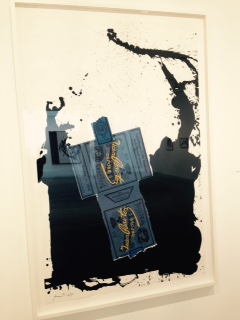 Bastos (1975)
Bastos (1975)
Robert Motherwell was one of the most thoughtful and widely read of the Ab-Exes, yet even he, at the height of his powers, professed to be a believer in automatism. He talked about the artist “voyaging into the night, one knows not where, on an unknown vessel, an absolute struggle with the elements of the real”. Perhaps it’s this image of darkness surrounding him that made black such a strong presence in Motherwell’s art.
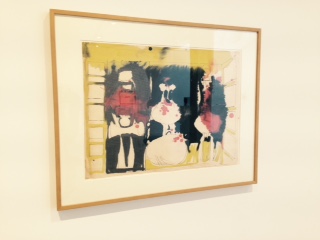 Untitled (1944)
Untitled (1944)
This black-focused show at the Bernard Jacobson Gallery – in its splendid new premises in St James’s – comprises one major canvas, and a number of acrylic or gouache studies, as well as prints. These are by no means as "automatic" as Motherwell may have wanted people to believe. The earliest is dated 1944, when Motherwell was in his late 20s. With its strong suggestion of the presence of three figures it shows he hadn’t completely abandoned representation at this point.
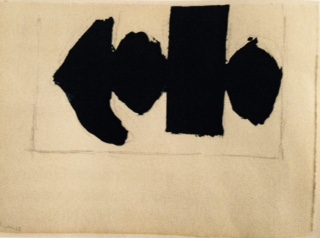 Study for Elegy for the Spanish Republic (1968)
Study for Elegy for the Spanish Republic (1968)
Motherwell’s long series of Elegy paintings in memory of the Spanish Civil War, which occupied him for more than twenty years and stretched to 140 big canvases, is represented here by a few preparatory sketches in pencil and acrylic. Prep sketches for other series from various stages of Motherwell’s 50-year career are also on show.
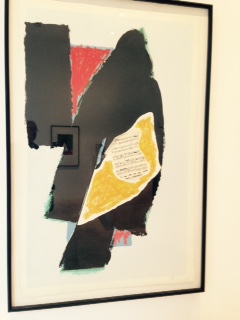 Black for Mozart (1991)
Black for Mozart (1991)
Motherwell was an innovator in lithography and here you can see examples of how he liked to incorporate collage into his print making. His late print in this style, Black for Mozart (1991), is one of the most accessible works in the exhibition.
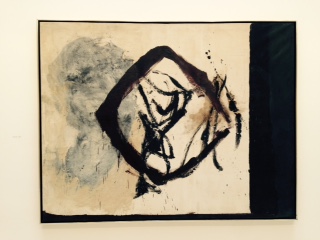 A View No. 1 (1958)
A View No. 1 (1958)
The major showpiece, however, is A View No. 1, a painting of more than 50 sq feet which dates from 1958. Here the rectangular block on the right and the thick line along the bottom are a solid black, giving a foundation of rational organization. This is reinforced by the deep brown window-like square in the centre and what was originally another black (perhaps brown) shape on the left. The latter is rounded and organic, but rendered amorphous and ghost-like by a cloudy slate-grey overpainting. The black strokes within the central enclosure in one way negate the sense of structure, in another contribute to the suggestion of some kind of calligraphy. The test of a good abstract painting is whether it can hold your attention and engage your imagination. This one can.
It's an exhibition not to be missed by anyone wanting to study the Ab-Ex chapter in the story of modern American culture. The art may not always have been exactly what it claimed, but it can still be compelling.